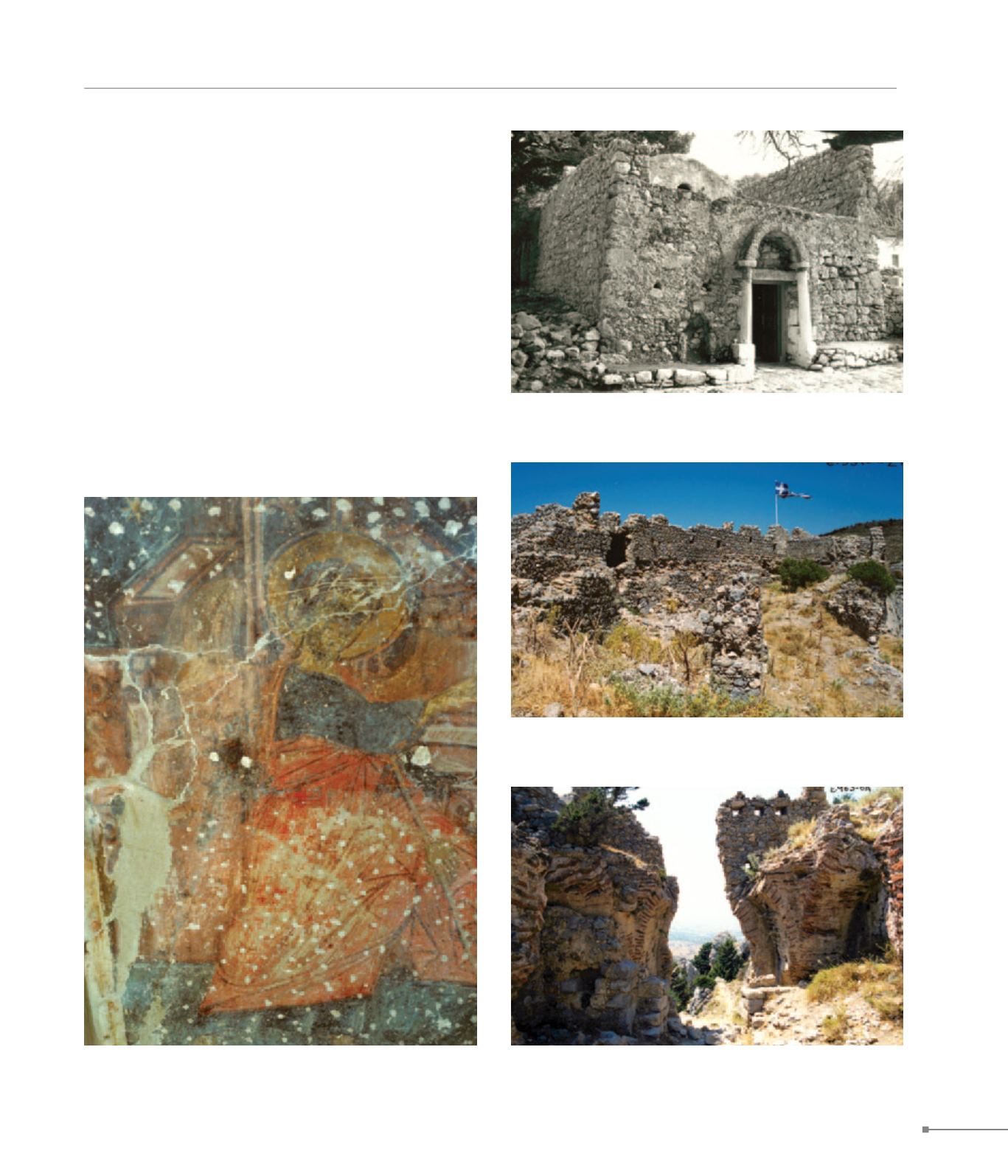
Kos.
Kos.
THE ISLANDS
399
of the 5th c. and the first decades of the 6th c., and seems to
have influenced the neighbouring islands and the cities on the
coast of Asia Minor. Regarding architecture, basilicas on Kos
have much in common with Christian monuments on the is-
lands of the E Aegean and Asia Minor (absence of tribelon, fre-
quent absence of atrium, baptisteries of similar design). Their
opulent sculpted decoration is also comparable.
After the devastation of the systematic Arab raids in the 7th
c., villages (where deserted or reduced) and new settlements
developed at safer locations on naturally protected, mountain-
ous sites. In the 11th c. Hosios Christodoulos Latrenos left
Strovilos in Asia Minor and settled on Kos, where he founded
the Panagia Kastrianon church and a castle at Palaio Pyli (4).
On the hill are preserved parts of the castle’s fortifications, dat-
ing from the period of Byzantine and of Knights Hospitaller
rule, as well as the castle’s late 11th-early 12th c. portal. To-
604. Kos, Saint Nicholas ton Ptochon, wall painting (Κως, Άγιος
Νικόλαος των Φτωχών, τοιχογραφία)
604. Kos, Pyli, castle gate (Κως, Πυλί, πύλη του κάστρου)
604. Kos, Pyli castle (Κως, Πυλί, κάστρο)
604. Kos, Pyli, Panagia Kastianon (Κως, Πυλί, Παναγία των Καστριανών)


